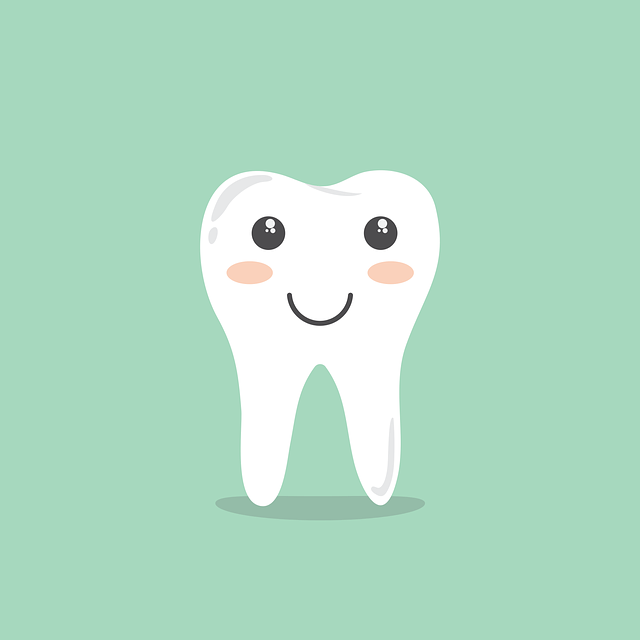Gap Be Gone: Can Retainers Fix a Gap in Teeth?
Are you tired of feeling self-conscious about that noticeable gap in your teeth? You’re not alone. Many individuals, despite having perfectly healthy teeth, find themselves longing for a more aligned and aesthetically pleasing smile. Fortunately, there may be a simple solution to your gap dilemma—retainers. In this article, we will explore whether retainers can truly fix a gap in teeth, providing you with the knowledge and confidence to make an informed decision about achieving the smile you’ve always desired. So, let’s dive in and discover the potential of banishing that gap once and for all.
1. Understanding the Issue: Exploring the Gap in Teeth
When it comes to understanding the issue of a gap in teeth, it is essential to delve into the various factors that contribute to this condition. The first thing to note is that a gap in teeth, also known as diastema, can occur for different reasons, including:
- Genetics: In some cases, individuals may inherit a gap between their teeth from their parents. This genetic predisposition can lead to a natural spacing between teeth.
- Missing teeth: If a person has lost a tooth or multiple teeth, it can create gaps in the remaining teeth. This can cause the surrounding teeth to shift and create spaces between them.
- Tongue thrusting habit: Some individuals have a habit of pushing their tongue against their front teeth while swallowing or speaking. Over time, this constant pressure can cause gaps to form.
It is important to note that a gap in teeth can vary in size and location. While some individuals may develop a small gap that is barely noticeable, others may have a more prominent gap that affects their smile and self-confidence. Understanding the underlying causes of this issue is crucial in determining the appropriate treatment options, which can range from orthodontic interventions to restorative dental procedures.

2. The Role of Retainers: Bridging the Gap
Retainers play a crucial role in bridging the gap between orthodontic treatment phases. These custom-made devices are typically worn after the completion of braces or aligner treatment. While the main goal of orthodontic treatment is to straighten teeth and correct alignment issues, retainers help maintain the achieved results in the long term.
There are two primary types of retainers: removable and fixed. Removable retainers, as the name suggests, can be taken out for eating, brushing, and flossing. They are usually made of clear plastic or wire, offering a discreet option for patients. On the other hand, fixed retainers consist of a thin wire bonded to the back of the teeth, ensuring constant support and preventing any shifting. Both types have their advantages, and the choice depends on the individual’s needs and the recommendation of the orthodontist.
- Preventing relapse: Retainers are essential in preventing teeth from reverting to their original position after orthodontic treatment. They provide the necessary stability, allowing the newly aligned teeth to settle into their proper positions. Without retainers, the teeth may gradually shift back, jeopardizing the success of the treatment.
- Ensuring bite alignment: Retainers also play a role in maintaining a proper bite alignment. They help ensure that the upper and lower teeth fit together correctly, preventing any potential bite problems or discomfort.
- Facilitating tissue adaptation: During orthodontic treatment, the surrounding tissues and bone undergo various changes. Retainers aid in the adaptation of these tissues, allowing them to settle properly around the newly aligned teeth.

3. Retainers 101: How They Work and What to Expect
Retainers play a crucial role in many professional relationships, especially in the field of law. Simply put, a retainer is a fee paid to secure the services of a professional or firm. When you engage a lawyer or a consultant, they may require you to pay a retainer upfront before they begin working on your case or project. This fee serves as a guarantee of your commitment and covers the initial work and costs involved.
Once the retainer is paid, the professional will allocate a certain number of hours or a specific scope of work to be completed within the agreed timeframe. They will diligently work on your case, providing you with expert advice, conducting research, or handling any necessary paperwork. Throughout the process, you can expect regular updates and open lines of communication to ensure that you are well-informed about the progress being made. Remember, retainers are not a one-size-fits-all solution, and the terms can vary depending on the specific professional and the nature of the engagement. It is always important to discuss and clarify the terms of the retainer agreement before committing to the engagement to avoid any potential misunderstandings.

4. Closing the Gap: Can Retainers Alone Fix the Issue?
In many cases, retainers can be an effective solution for closing the gap between teeth. They are custom-made devices that fit over the teeth and help hold them in their new position after orthodontic treatment. Retainers work by applying gentle pressure to the teeth, encouraging them to shift into the desired position over time. Here are some key points to consider when it comes to using retainers to address the issue of gaps:
1. Maintenance: Retainers require consistent usage to be effective. It’s important to wear them as instructed by your orthodontist, typically for a few months or even longer. This ensures that the teeth stay in their new position and the gap closes gradually.
2. Compliance: The success of using retainers to close gaps depends on the patient’s compliance. It’s crucial to follow the orthodontist’s instructions regarding wearing the retainer consistently and for the recommended duration. Failure to comply may result in the gap not closing fully or the teeth shifting back to their original position.

5. The Retainer Journey: Patient Experiences and Success Stories
Retainers play a crucial role in maintaining the results of orthodontic treatment. We believe in sharing the real-life experiences of our patients to provide a glimpse into their retainer journey. By hearing their success stories, you can gain valuable insights and understand the importance of consistent retainer usage.
Here are some highlights from our patients’ retainer journeys:
- Long-lasting Results: Our patients have reported excellent long-term results after following their retainer regimen diligently. By wearing their retainers as prescribed, they have successfully maintained their beautifully aligned teeth, ensuring all the hard work during orthodontic treatment pays off.
- Improved Oral Health: Many of our patients have noticed significant improvements in their oral health since starting their retainer journey. Retainers not only keep teeth in their desired position but also aid in preventing issues like teeth grinding and jaw discomfort.
- Enhanced Confidence: The positive impact of retainers goes beyond just oral health. Our patients have shared how their newfound confidence has boosted their self-esteem. With a straight smile that they are proud to show off, they feel more comfortable in social and professional settings.
We encourage you to explore these patient experiences and success stories to gain a better understanding of the retainer journey. Remember, consistent retainer usage is key to maintaining your beautiful smile for years to come.
6. Considering Alternative Options: Orthodontic Treatments for Gap Closure
When it comes to closing gaps between teeth, orthodontic treatments offer several alternative options that can effectively address the issue. These treatments are designed to gradually move the teeth into their desired positions, resulting in a more aligned and aesthetically pleasing smile. If you’re considering closing a gap between your teeth, here are some orthodontic treatments that you may want to explore:
1. Braces: Traditional braces are a tried and true method for closing gaps between teeth. They consist of metal brackets that are attached to the teeth and connected with wires. Over time, these wires apply gentle pressure to gradually shift the teeth into the desired position. Braces are highly effective for closing gaps and can be customized to meet your specific needs.
2. Clear aligners: Clear aligners, such as Invisalign, are a popular alternative to traditional braces. These custom-made, clear plastic trays are virtually invisible and can be easily removed for eating, brushing, and flossing. Clear aligners work by exerting gentle pressure on the teeth to guide them into their correct positions. They are a discreet and convenient option for closing gaps.
7. Expert Insights: What Orthodontists Have to Say about Gap Closure with Retainers
Orthodontists are highly knowledgeable professionals who specialize in correcting dental misalignments. When it comes to gap closure with retainers, these experts have valuable insights to share. Here are some key points orthodontists emphasize:
1. Retainers as a non-invasive solution:
- Orthodontists highlight that retainers offer a non-invasive approach to closing gaps in teeth.
- They explain that retainers are custom-made to fit snugly over the teeth, exerting gentle pressure to gradually move them together.
- Retainers are often recommended when the gap is relatively small, and the surrounding teeth are already aligned.
2. Compliance is key:
- Orthodontists stress the importance of wearing retainers as directed to achieve effective gap closure.
- They advise patients to wear their retainers consistently, usually for a certain number of hours each day and during sleep.
- Consistency and compliance with the recommended wearing schedule are crucial to ensure the desired results.
By seeking the expertise of an orthodontist and following their recommendations, individuals can gain valuable insights into using retainers for closing gaps between teeth. It is important to consult with a professional to determine the most suitable treatment plan for each individual case.
Frequently Asked Questions
Q: Can retainers fix a gap in teeth?
A: Yes, retainers can help fix gaps in teeth.
Q: How do retainers work to close gaps?
A: Retainers exert gentle pressure on the teeth, gradually moving them together and closing the gap.
Q: Are retainers effective for all types of gaps?
A: Retainers are effective for small to moderate gaps. However, larger gaps may require additional orthodontic treatments.
Q: Do retainers work faster than braces?
A: Retainers generally work faster than braces for closing small gaps because they focus on specific areas rather than the entire mouth.
Q: Are retainers a permanent solution for gaps?
A: Retainers are not a permanent solution. Once the desired gap closure is achieved, a retainer should be worn to maintain the results.
Q: How long should one wear a retainer to fix a gap?
A: The duration of retainer wear varies depending on the individual case, but it typically ranges from a few months to a year.
Q: Are retainers uncomfortable to wear?
A: Retainers may feel slightly uncomfortable at first, but most people quickly adjust to wearing them.
Q: Can retainers fix gaps in adults as well?
A: Yes, retainers can fix gaps in adults, but the success of the treatment may depend on the individual’s dental health and the size of the gap.
Q: Are there any risks or side effects associated with using retainers?
A: When used as prescribed, retainers are generally safe. However, improper use or neglecting oral hygiene while wearing retainers can lead to tooth decay or gum disease.
Q: Can retainers be used to fix gaps without consulting a dentist?
A: It is best to consult a dentist or orthodontist to determine if retainers are the appropriate solution for fixing gaps in your teeth. They can properly assess your dental needs and recommend the most suitable course of treatment.
The Conclusion
In conclusion, it is evident that retainers can indeed fix a gap in teeth, providing a simple and non-invasive solution for individuals seeking to close the space between their teeth. By applying gentle pressure and holding the teeth in their desired position, retainers help to gradually shift the teeth closer together, ultimately resulting in a more harmonious and aesthetically pleasing smile.
One key takeaway is that retainers are most effective when used consistently and as directed by a dental professional. Adhering to a strict wearing schedule and properly caring for the retainer can maximize its effectiveness in closing the gap and preventing relapse. Additionally, it is important to note that retainers are most suitable for individuals with small to moderate gaps, while more severe cases may require alternative orthodontic treatments.
Furthermore, retainers offer a convenient and discreet solution for those who prefer to avoid traditional braces or invasive dental procedures. They are easily removable, allowing for comfortable eating and oral hygiene practices, while also being virtually invisible, ensuring minimal impact on one’s appearance.
Overall, retainer therapy presents a viable option for individuals seeking to address a gap in their teeth. By consulting with a dental professional, adhering to a regular wearing schedule, and maintaining proper oral hygiene, one can confidently achieve the desired outcome of a beautifully aligned smile. So, say goodbye to the gap and embrace the transformative power of retainers in achieving dental perfection.






